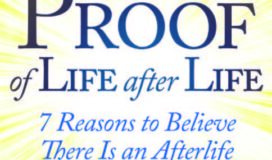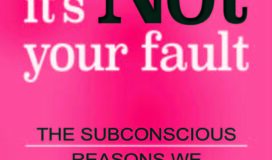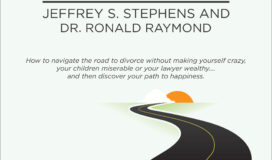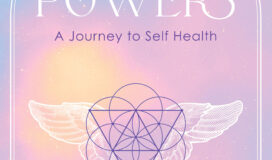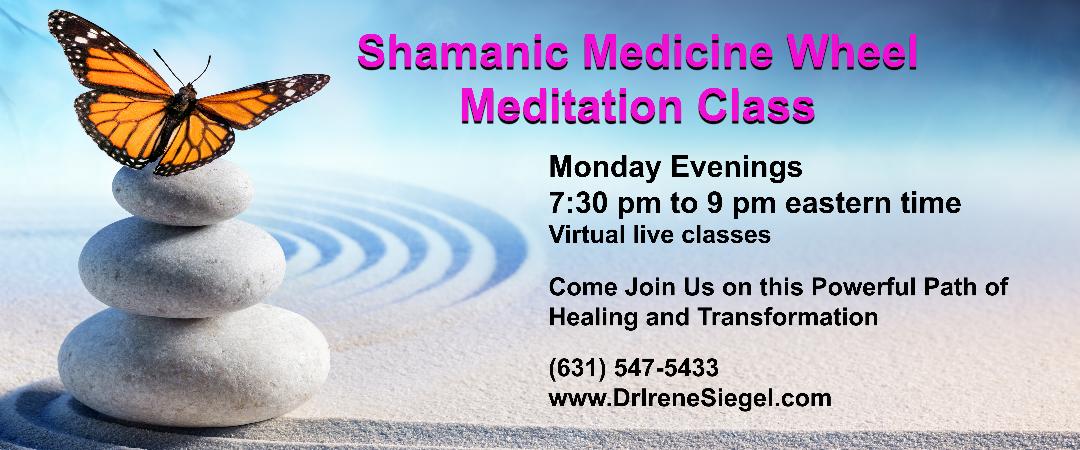Health is a state of body. Wellness is a state of being.
—J. Stanford
Sri Nisargadatta Maharaj was a spiritual master in the Advaita (Oneness of All Life) tradition. He proclaimed, “In my world all is well.” What a strange statement for a person to make! Didn’t he watch the news? Wasn’t he depressed by the starvation and wars that plagued his country, and the appalling poverty on the backstreets of Mumbai?
How could he buffer himself from the real world? If Nisargadatta didn’t see the horrors of this world, what world did he see? Even more important: If that man can live in a world where all is well, can I live there too? And if so, how can I get there?
A Course in Miracles differentiates between the world God created and the world the ego, or the limited sense of self, made. God’s world is comprised of all that is good, eternal, loving, joyful, and soul-rewarding. We call that state “heaven.” We don’t have to die to get to heaven. We can enter it at any time by choosing thoughts, feelings, and actions aligned with it. The ego’s world, by contrast, is built on fear, separation, emptiness, war, and death—the domain that seems inescapable when we equate ourselves with a body and regard the physical world as the only reality. The purpose of our spiritual journey is to depart the false world of fear and return to the real world of love. Nisargadatta said, “Love is seeing the unity under the imaginary diversity.”
Disease is an attribute of the ego’s world, and healing is an attribute of God’s world. God recognizes us as immortal, untarnished spirits. When you love someone, you see the best in them and you want only good for them. You take no delight in their pain, and all delight in their wellbeing. Get beyond any belief that God finds any purpose in our sorrow or suffering. If we are going to escape a hellish world and enter a heavenly experience, we must see the world as God sees it. When the disciple Peter expressed his doubts to Jesus, the master told him, “You aren’t thinking as God thinks. You are thinking as a man thinks.” In this crucial feedback we find the answer to the question, “How can I live in a world where all is well?”
Crossing the Bridge
Bruno Gröning, who effected thousands of miraculous healings, forbade his patients to state their diagnoses or talk about their illnesses. Fixating on symptoms, he explained, perpetuates them. Gröning instructed his followers to think, talk, and focus only on wellness and God. Illness, he said, is the result of wrong perception, and it can be corrected by right seeing. To even see illness is a form of wrong thinking. A Course in Miracles tells us, “Spiritual vision literally cannot see error.” To recognize wholeness in spite of the appearance of illness is the most powerful healing tool. Bruno Gröning called us to give reality only to the good, and let all else go.
After my mother had cataract surgery, she spent a few days in a residential recovery facility. On the center of the patients’ dining room table a little card requested, “Please do not discuss your illness at the table.” Even a medical institution realized that talking about illness is a downer! Bruno Gröning would extrapolate the advisory: “Please do not discuss your illness. Period.” You have probably noticed that when one person in a group starts talking about an illness, traffic accident, or disaster, immediately others in the group chime in with their similar stories, and quickly the conversation plummets. Unchecked, negativity is contagious. Misery truly does love company.
If you refuse to give attention to illness and evil, where do they go? Back to the nothingness from which they came. Where does a dream monster go when you wake up? What has no substance does not have to be resisted, attacked, defeated, or stuffed somewhere. The more you fight a dream monster, the more you stay trapped in the nightmare. You might defeat the monster, but you are still dreaming and subject to the whims of dreams. The next monster is just around the corner. Monsters can threaten or defeat you only when you rise into the dimension where they have power. In another reality they do not exist.
In the inspiring documentary, Fat, Sick, and Nearly Dead, Joe Cross found himself at the end of his rope, 100 pounds overweight, jammed with steroids, and suffering from an autoimmune disease. One day Joe got fed up with feeling awful and he took charge of his life by fasting on fresh juices. Over time he lost a great deal of weight and became radiantly healthy. Joe placed a juicer in the back of his car and drove across America, inviting over 500 people along the way to enjoy fresh juices and reap their benefits. At a truck stop Joe met miserably unhealthy 429-pound Phil, trudging through his life consigned to 18 medications; his doctor warned him that he was a cheeseburger away from a heart attack. Joe took Phil under his wing and guided him to embrace a juice diet, on which he lost hundreds of pounds, dumped his medications, and became happy and healthy—a truly miraculous transformation. In a final scene, we see a far lighter and brighter Phil working in a health food store turning customers on to the benefits of juicing.
Sometimes we have to get so sick of a life that isn’t working that we reach for one that does. Symptoms get our attention to motivate us to claim wellness instead. Rather than dwelling on symptoms, we can pivot on them. We can use our experience of contrast to make a better choice. “This can’t be it!” is the first step to discovering and claiming, “This is it!” Even our symptoms were part of “in my world, all is well” because they lit a fire under us to ascend to a higher rung of wellness.
How to Make Affirmations Work for You
While many people use affirmations to achieve and sustain wellness, they don’t fully understand how and why they work. If they did, their affirmations would yield faster, stronger, and deeper results. When you utter an affirmation, you are not convincing yourself of something you want to be true. You are reminding yourself of something that is already true.
The mind is composed of three strata: On the surface level the conscious mind thinks an endless stream of random thoughts, mostly untrue, instilled largely by fear and cultural programming. Yogis call this “the Monkey mind,” as it darts about wily, confused and distracted. This mind must be stilled and transcended to achieve illumination, clarity, and inner peace.
Below the conscious mind, the subconscious mind is the repository of the feelings, beliefs, and attitudes we are unwilling or unable to hold in our conscious mind. They are emotion-fueled, the repository of past pleasures we filed in our memory bank so we can repeat them, or past pain we wish to avoid. Undoing erroneous beliefs in our subconscious is crucial to our healing because the subconscious determines our experience far more than the conscious mind. I heard about a woman who was not recovering from a relatively minor surgical operation. After a few weeks, a psychologist hypnotized the patient to try to access her subconscious beliefs. During hypnosis she recalled that while she was asleep under anesthesia, she heard the surgeon say, “I doubt she will recover.” The psychologist then interviewed the surgeon , who admitted he had made that statement— but it was about another patient he and the surgical team were discussing. Yet the patient, unaware of that element of the conversation, assumed the statement applied to her, and her subconscious played out the dire prognosis that had nothing to do with her. Given the truth about the situation, she soon recovered.
Freud was correct in likening the mind to an iceberg with a small portion showing above the water surface and the far greater volume below. The key to improving your health, finances, and relationships is to upgrade your subconscious beliefs. To achieve this: (1) Formulate and practice affirmations that edify the beliefs you prefer to manifest; (2) Mobilize prayer to ask Higher Power to do what you cannot consciously do, and heal you or a circumstance; (3) Pay significant attention to people, words, images, and experiences that match your desired situation.
Below the subconscious mind sits the super-conscious mind. Psychology teachers usually erroneously depict the super-conscious as above the conscious, floating in space like the blue sky a child draws as a thin strip at the top of a finger painting. Yet the super-conscious is not somewhere outside of us; it is embedded deep within us at the core of our being. The super-conscious is your memory bank of truth. It is literally the mind of God, seeded indelibly within you. A part of you knows all that God knows. You may forget the truth, ignore or deny it, but universal wisdom remains hard-coded into you. No person or experience can undo it. What God knows in you is absolutely, unequivocally, indelibly, eternally so.
When you practice an affirmation, you are sending a pipeline from your conscious mind through your subconscious into your super-conscious, like a drill penetrates the earth until it reaches a pure, natural reservoir of water. When you tap into that pool of wisdom, you can draw its healing contents to the surface and make practical use of the precious resource. One of the best descriptions I have heard about how an affirmation works is, “The spirit within me loves to hear the truth about itself.” When you do an affirmation properly, you feel uplifted, empowered, and healed. You have achieved resonance with the mind and heart of God. Nothing is more edifying than remembering that you are whole and lovable, you deserve the best that the universe has to offer, and you can mobilize the magnificent principles that make life work.
Here are some examples of affirmations that will lift and heal you:
* All is well.
Life is good, and I am good in it.
I am whole, healthy, and happy.
* I am loved, guided, cared for, protected, and safe.
* All things are working together for good.
* God’s timing is perfect.
* I love as God loves, and I reap the infinite blessings that love bestows.
* Every dollar I spend enriches the economy, blesses everyone it touches, and returns to me multiplied.
* My mind is receptive, my heart is wide open, and miracles unfold before me.
* I know who I am and what I am here to do.
* I am perfect as God created me.
You don’t have to say an affirmation a thousand times, although if you enjoy doing so, you certainly can. A few slow, deliberate, sincere repetitions can take you where you need to go. When you get the sense that you have accessed a deeper truth that feels right and real to you, you are there. Because we are spiritual beings, it is the quality of experience that makes our life worthwhile. When you gain the experience the affirmation is intended to generate, you and the affirmation have succeeded.
Feel free to formulate your own affirmations. You will be guided. You can also turn to spiritual teachers who have meditated on affirmations and passed them along to you. Louise L. Hay has done landmark work in formulating affirmations that offset specific illnesses. Her classic books Heal Your Body and You Can Heal Your Life are marvelous repositories of guidance and inspiration. No matter what route you take, one thing is for sure: When you remind yourself of what is true, something inside you stirs and that truth becomes established in your world.
Excerpted with permission by Alan Cohen Publications, from The Master Keys of Healing ©2020, by Alan Cohen
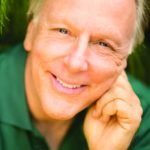 Alan Cohen is the author of many inspirational books including Spirit Means Business. For information on his programs and books, videos, audios, online courses, retreats, and other inspirational events and materials, visit www.AlanCohen.com.
Alan Cohen is the author of many inspirational books including Spirit Means Business. For information on his programs and books, videos, audios, online courses, retreats, and other inspirational events and materials, visit www.AlanCohen.com.








